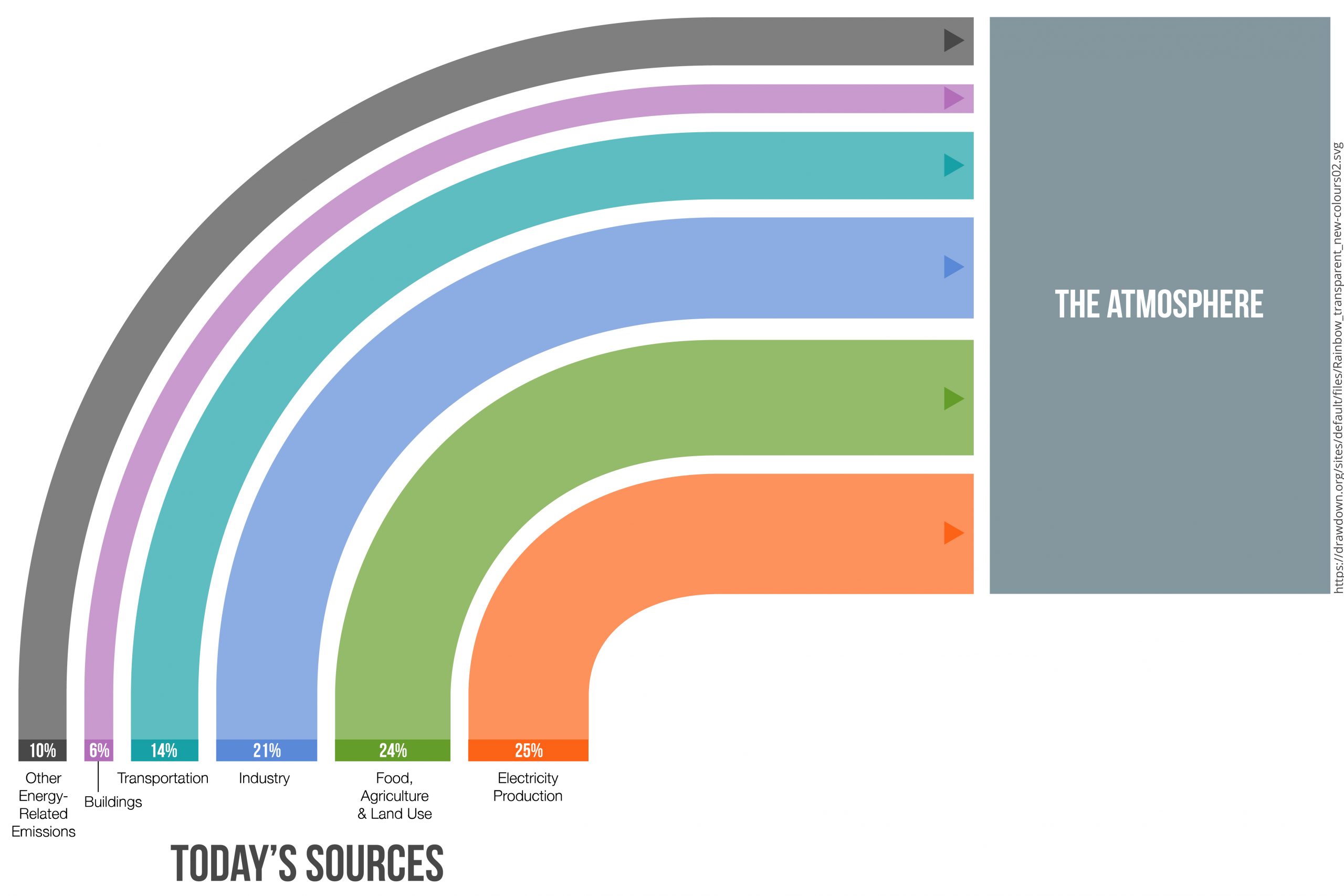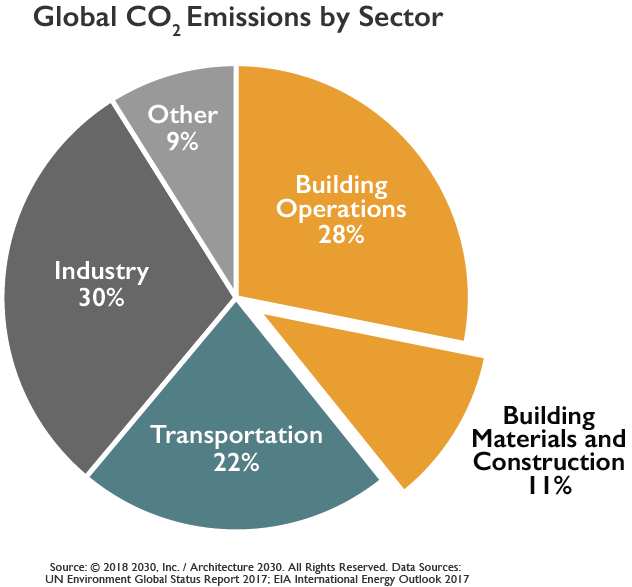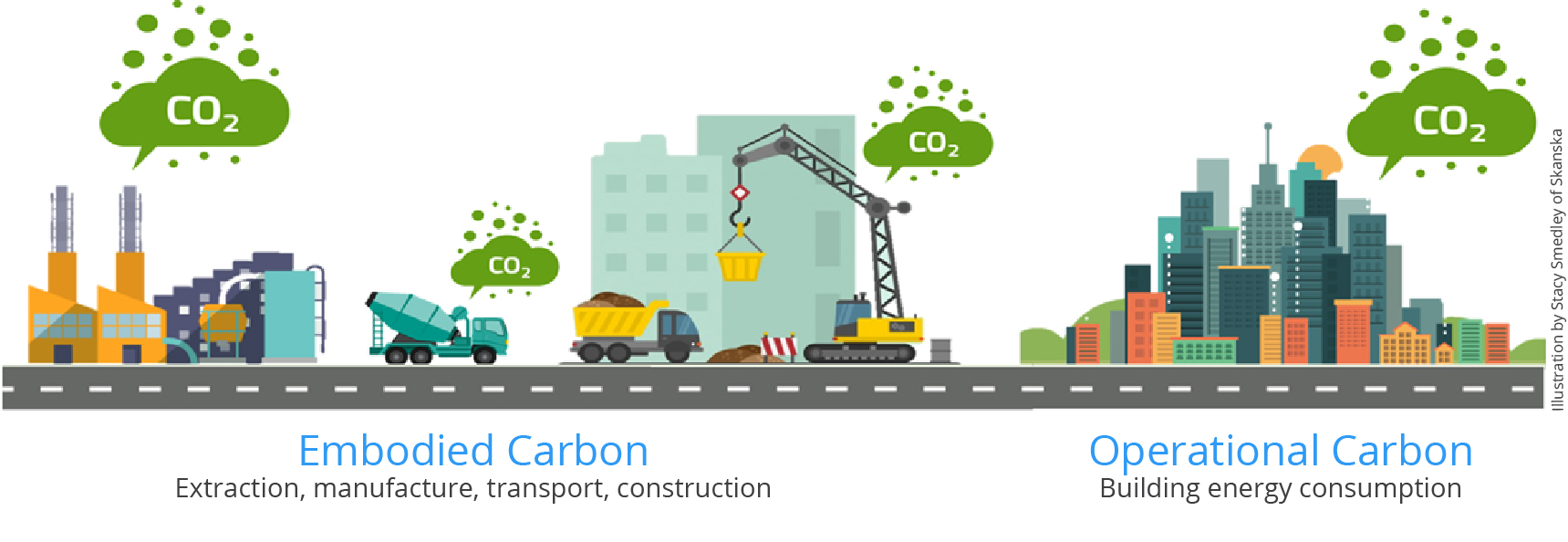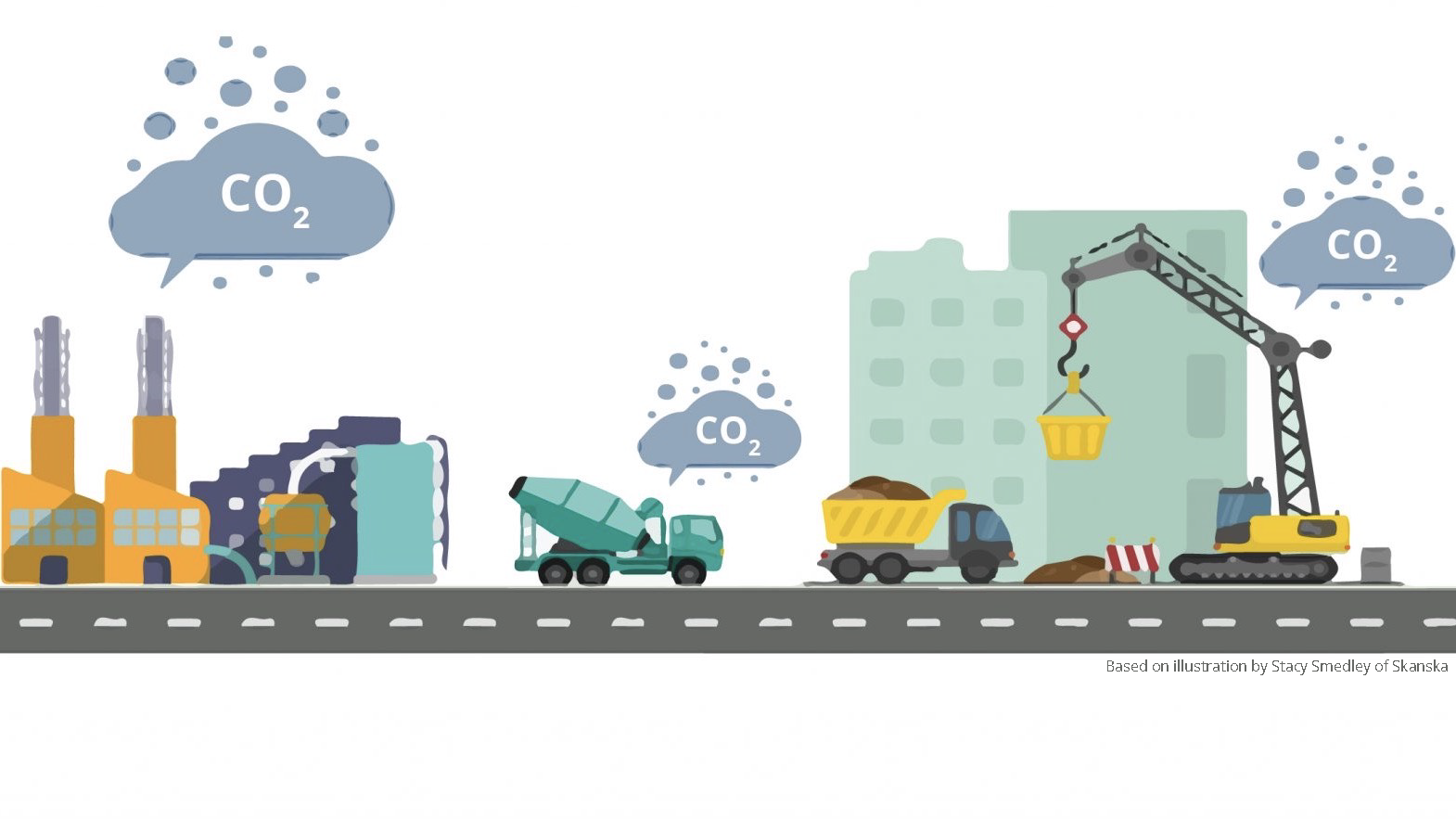By Sara Draper
By now many people are familiar with the idea that carbon and other greenhouse gas emissions (GHGs) are causing earth’s climate to change rapidly. (And if you’re not, NASA has a great explanation!) This dramatic climate change is resulting in more intense and unpredictable weather, floods and droughts, sea level rise, ocean acidification, and more. These changes challenge our human way of life, affecting farming, our health, and our economic structures.
But what are the sources of those emissions? And what can we do about them?
According to Project Drawdown, greenhouse gas emissions come from six major sources:

If we take a broader view, including all building energy use and building products, buildings account for a whopping 39% of global carbon emissions. This is a huge opportunity for creating better buildings that drastically lower emissions.

The majority of building-related emissions comes from two categories: operational and embodied. Operational emissions are those that result from using the building: the fuels used in heating and cooling, electricity use, water heating. Embodied carbon is the sum total of emissions produced throughout the life of a building: in extracting raw materials, manufacturing products, transporting them to site, constructing the building, maintaining it, and eventually demolition and disposal.

This embodied share is no small number. According to Architecture 2030, “annually, the embodied carbon of building structure, substructure, and enclosures are responsible for 11% of global GHG emissions and 28% of global building sector emissions,” (and this doesn’t even include demolition-related emissions).
So in order to reduce building-related emissions, we need to reduce both operational and embodied carbon. Environmental advocates and green builders have long focused on operational energy efficiency and reduced fossil-fuel energy consumption as the most important strategies for sustainable building. And energy efficiency is (slowly) improving, thanks in part to stricter energy codes, green building standards like LEED and the Living Building Challenge, and economic incentives for renewable energy. But as our new buildings become more energy efficient, the embodied carbon emissions associated with construction become an even bigger proportion of a building’s total lifetime emissions.
“The world is building the equivalent of a whole New York City every month. If we don’t start reducing embodied carbon emissions now, we’ll literally build ourselves out of any possibility of meeting the global carbon reduction goals needed to halt climate change.”
(Carbon Leadership Forum)
But we’re getting ahead of ourselves. Before we dive in to how we can reduce embodied carbon in building (and we can!), let’s learn a bit more about how we account for all those emissions…
Stay tuned for Part II: A Journey of 1,000 Steps


